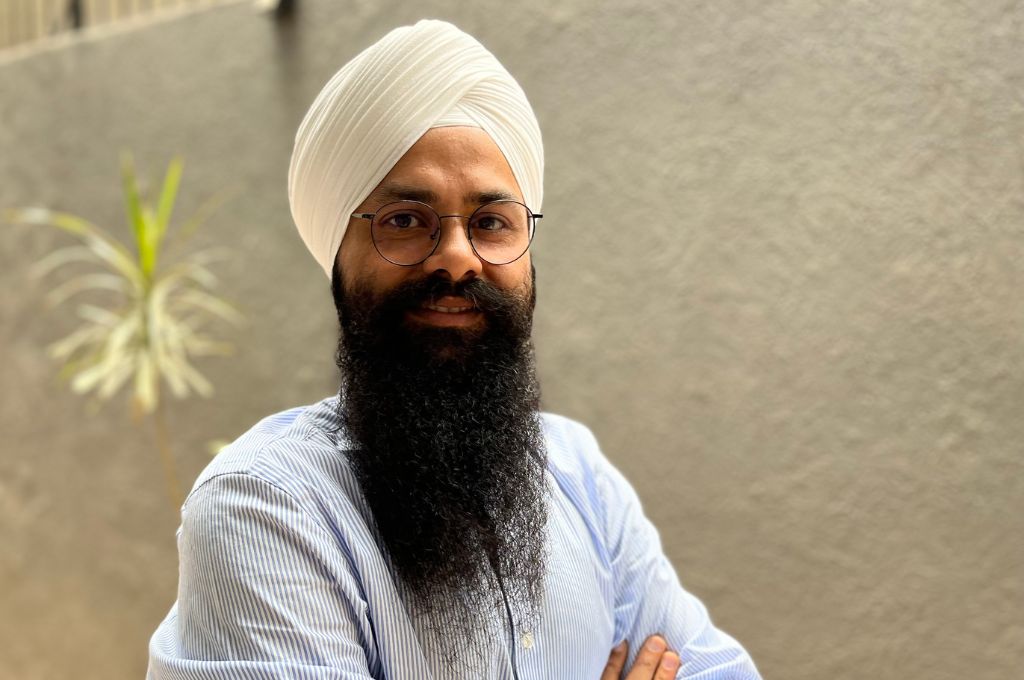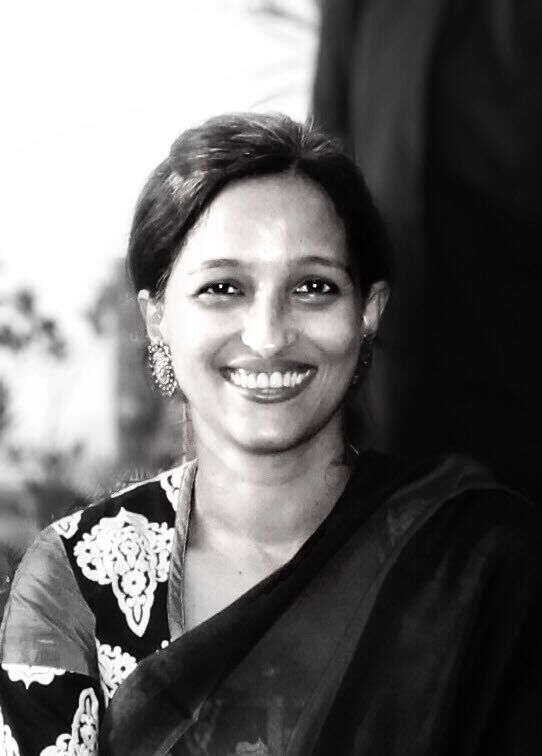Jarnail Singh is the deputy director, India, at John D and Catherine T MacArthur Foundation, where he co-manages the India portfolio of the foundation’s grantmaking. As a development practitioner, he is deeply interested in the intersection of the climate crisis with social equity and behavioural communications. During his time at TERI and the Climate Group, Jarnail worked in the fields of energy transition, access to clean energy, and business-led climate action. He was also named a Feldman Fellow at the Heller School for Social Policy and Management, Brandeis University.
In this interview with IDR, Jarnail sheds light on philanthropic giving in India in the context of the climate crisis. He speaks about how funders can play a crucial role in developing more equitable climate solutions, creating space for diverse voices and experiences, and fostering partnerships and collaborations to strengthen the climate action ecosystem in the country.

How has climate change philanthropy evolved in India?
Based on my recent experience in philanthropy with the MacArthur Foundation, I have witnessed two approaches to climate action in India. Historically, it has been the ‘climate first’ approach, wherein organisations prioritise emissions reductions first and try to fit the Indian context into the larger climate change mitigation story. We could also call it a ‘climate story, India grammar’ approach. More recently, this has evolved into what I can call the ‘India story, climate grammar’ approach, where our partners prioritise India and its people’s sustainable development through a climate lens. The focus is on looking at climate change with the contextual understanding of where India is, and planning interventions for climate action accordingly.

To be more specific, if we were to look at the history of climate giving in India, philanthropic thinking predominantly revolved around the wedges approach. The focus was on classifying all the gigatons that exist in the atmosphere in terms of greenhouse gas emissions, identifying the largest opportunities in terms of emission reductions, and devising a plan to target those sectors with key stakeholders.
In the recent past, however, there has been a remarkable shift, wherein equity has become more mainstream in climate philanthropy. The focus now is on meeting people where they are as opposed to taking generic climate solutions to them. This means that the discourse is currently geared towards understanding the challenges that people face in their day-to-day lives, addressing the gaps that state and municipal governments experience when they execute large-scale projects, and trying to understand if climate is a barrier or driver of change when they think of economic development.
This is where I have seen great synergy between domestic philanthropy, which is rooted in the local development context, and international philanthropy, which has traditionally been more climate-focused. This synergy is even more pronounced at the sub-national level where domestic philanthropy has had decades of contribution and wisdom on people-centred growth, which acts as an asset to their international counterparts.
Additionally, I have noticed a transition within the larger philanthropy space—from programmatic support to a focus on organisational capacity building. This is true for both domestic and international philanthropy. The metrics of success have also evolved as part of this shift. These are not just about greenhouse gas emission reductions but also about the organisation’s capacity to enable the country’s equitable and sustainable growth over a period of time.
You mentioned how equity has become more mainstream in the climate space. How should funders be thinking about it?
The climate crisis affects the poor and marginalised disproportionately. However, currently, climate action does not address these unequal impacts or past injustices. Hence, an intentional focus on equity must be central to philanthropic giving within the climate space.

Energy transition will be unfair to people who have been historically marginalised, and this necessitates a focus on equity throughout.
I recently read a book called Climate Justice in India, and it summed up quite well how a transition from a fossil economy to a clean energy economy will retain the key principles of exploitation and extraction. We need to acknowledge that the ongoing energy transition will be unfair to people who have been historically marginalised, and this necessitates a focus on equity throughout. Having said that, when it comes to climate philanthropy, we cannot solely focus on solving for structural inequalities and sideline climate goals. The goal is to achieve a people-centric just energy transition, which accounts for current and historical injustices and tries to resolve those without impeding the much-needed shift towards clean energy.
It is crucial for philanthropic organisations in this space, therefore, to really spend time trying to understand India’s political, economic, and climate action ecosystems simultaneously. The first step is to identify marginalised communities that will invariably get left behind in this transition. These could include communities involved in fossil fuel sectors, heavy industries, migrant labour works, smallholder farming, etc. The next step will be to ensure that the risks to these communities are reduced; this can be done by creating systemic interventions with the central and state governments to include perspectives from these groups so that nobody gets left behind.
It was during the pandemic that we at MacArthur made an informed decision to mainstream equity across our climate work. It has always been central to our global work, but in 2020 we made a radical shift to say that if a climate solution only works for the climate, and not for the people, it’s not really a solution. Philanthropic giving in India needs to ensure that mitigation also works for all states and sectors, and for the people most vulnerable to climate change.
Let me also say that just mitigating risks for these communities is not enough; we must also think of the energy transition as a once-in-a-century opportunity to create a better future for everyone. We must think about solutions that can pivot us towards a better society on the back of this transition.
For instance, if we are looking at the decarbonisation of brick kilns, how can we engage with the people impacted to ensure that they are considered a part of the solution and not just a part of the problem? Rather than entirely removing the brick kilns can we include people in their technological transformation? And can we also look at better working conditions for those involved?

In order for climate solutions to work for the people who will be affected, it is crucial for them to also be part of the discussion. How can we make this happen?
In my personal opinion, a large part of this problem is the representation of these communities within the climate space. Climate change mitigation is still very much an elitist concept in India. People who have lived experiences of the climate crisis are hardly a part of the panels that we often see in metros such as Delhi and Mumbai.
A major reason for this divide is language and access to leadership tools and resources, which can be counted as privileges. A good first step could be to become more intentional about hiring people from diverse backgrounds and thinking of diversity and equity when putting together any public opportunity. And to do this not in a tokenistic manner, but in a way that looks at building and incorporating them as a part of our teams.
I feel there is a strong role for domestic and international philanthropy to make the climate action space in India more local and inclusive. Sure, it is difficult to hire a person who only speaks a vernacular language in a multilingual, national-level team. However, climate organisations can think of building the capacities of their hyperlocal staff and bringing them into the national discourse as opposed to keeping them engaged (perpetually) in fieldwork.
Another opportunity could be for philanthropies like ours to support grassroots organisations. However, we may not have access to them because of our own capacity and regulatory issues. Therefore, it is important to identify and partner with organisations working at the interface between community and policy.
We need more pipeline builders to help get the smaller and regional nonprofits included in policy discussions.
Additionally, there is a strong case to be made for building a pipeline of smaller organisations with the potential for big impact. Dasra’s Rebuild India Fund and EdelGive’s Grow Fund are both great examples. The primary focus of these initiatives is to work with numerous organisations across the country to build team capacities and expand the scope of their work. We need more such pipeline builders to help get the smaller and regional nonprofits included in policy discussions.
Lastly, I would like to push for two key values—empathy and humility—among members of the climate community. We need to acknowledge that we don’t know everything and that if we want this transition to work for the people and the planet, we need to hear first-hand from community-facing organisations. Creating space for collaboration and opening up niches is an important aspect of this process, but a precondition for these kinds of partnerships, especially at scale, is trust. Honestly brokered alliances and platforms can enable knowledge sharing, and that’s where I think the ClimateRise Alliance can play a huge role.
With the increase in momentum for climate action, what gives you hope for the future when you look at the work that’s happening in India?
The heat is rising, literally and figuratively. Unfortunately, in this onset of adversity and heightening climate crisis is where I see hope for collaboration. We are all in this together and we have left ourselves no option but to collaborate.
Everyone is beginning to realise that we need to have an India story, and bring in climate grammar wherever it is needed. This is where I feel climate organisations are becoming more open to concerns on sustainable growth; social equity; geopolitics; climate’s intersection with health, livelihoods, gender; and so on. I see hope in our partners envisioning a new India that emerges as a shining example of how economic growth, equity, and climate are complementary forces rather than antagonistic to one another.
At the end of the day, I think all of us in this space need to work with the understanding that the climate crisis is all-encompassing—it will affect everyone. And, therefore, the knowledge to address the crisis and solutions for the future should not remain in the hands of a few.
The views expressed by Jarnail Singh in this interview do not reflect the official position of the MacArthur Foundation.
—
Know more
- Read this blog to learn more about climate philanthropy in India.
- Listen to this podcast episode that discusses why and how corporate, individual, and private philanthropy can step up when it comes to climate finance in India.
- Read this article to learn more about why a just transition needs to go beyond the energy sector.






